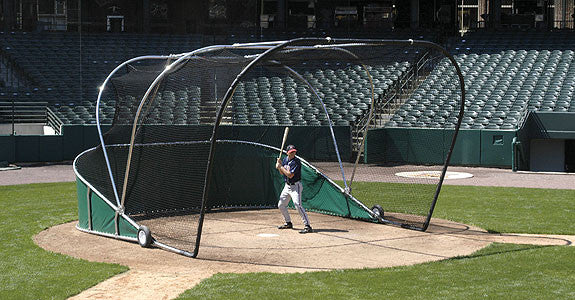Controlling the Running Game, we talk about varying looks. Varying looks can be thought of as varying your timing to the plate with runners on base, not necessarily how many times you look at a runner, although that can be considered an element as well.
Pitchers can come up with a number of ways to vary their looks on the mound. To accomplish this, as the pitcher comes set and prepares to deliver the pitch, we can hold the ball for either a count of "1 one thousand, 2 one thousand" or 3-4 "one thousands" or even longer if you wanted to (although someone is likely to call time), while mixing up how many times we physically look at the runner. This is done most often with runners at first or second. Holding the ball for 3-4 "one thousands" can really disrupt the timing of a base runner and also serve to stiffen his legs creating a poor reaction state for the runner. Holding the ball for 3-4 "one thousands" is also a great time to pick, especially with a player on first who is looking to run. At first base this is crucial as we want to limit the jump the runner gets on a straight steal or on contact, thus making scoring position harder to achieve and double plays easier to turn.
Varying your looks with a runner at second is important because if we can limit the jump, the runner will be less likely to steal third or score on a single. We deal with a lot of athletes looking to play at the next level and as you move on in your career, the demand to hold runners and limit runs increases. The truth is, if you can’t hold runners you just won’t be able to pitch in collegiate baseball or other high levels of baseball.
Ryan Armstrong, Head Pitching Coach
Article written and contributed by Kevin Hussey
One of the more frequent requests we get for blog ideas is how to go about building a batting lineup. This is an interesting request as while there are many standard philosophies to building a lineup, there have also been a number of computer modes that have produced the same conclusion - that the make up of lineups has little to no effect on wins over the course of a season.
So having preambled with that, let's say that it does matter and matter a lot. So now what? When building your lineup, there are many different approaches to what is the best method. Every team is made up of different players and different situations which mean there are no right answers, there are only different perspectives. Here are 4 approaches you can take when filling out your own batting lineup:
1 - Batting your best player 1st
Some coaches will use the strategy of batting their best player first even if he does not fit the typical leadoff hitter profile. The reason for this theory is that no matter what happens, your best hitter will always have the most at bats. You will never have a game end with your best hitter on deck questioning whether you should have batted them one spot ahead in the line up. Another advantage to this strategy will be the first pitch of the game. Almost always a pitcher will start the game with a fastball, this will at least give your best hitter one pitch a game that they will have the advantage of almost always knowing what it will be. This may not seem like a big deal, but one pitch can always be the difference in a baseball game.
2 - Batting your best player 4th
Every coach will have to make the decision between batting their best hitter 3rd or 4th. Everyone has their own opinion on what works best but again, every team is different. The advantage to your best player batting 4th instead of 3rd is that their first at-bat will either be with a runner on base or leading off an inning (unless a run has scored). Your best hitter will never be in a situation that their first at-bat will be with 2 outs and no one on base. This will take out the possibility of them hitting in the least opportunistic situation in baseball in their first at-bat, which as a coach is the only at-bat you can really control.
3 - Keeping it consistent
A lot of coaches like to switch the lineup on a regular basis. Some people may not think that’s a big deal but inconsistencies in the lineup can change a batter's mentality. If you keep changing the lineup, you're decreasing the chance that your hitters will be put in a situation they are used to. For example, if you have a kid that hits 2nd in the order, he will often see situations where the lead-off hitter will get on and either try and steal a base or attempt something that other players will not. The hitter will get familiar with that approach and naturally adjust to those situations. If all of a sudden that hitter moves to the 5th in the order, he may see more situations that slower runners will be on base and different expectations are implemented. When hitters get more opportunity to be in the same situation, they have a better chance to be productive.
4 - The safe strategy
The safest strategy to setting a proper lineup is to try and put your most consistent hitters together. Putting together the players that get on base the most followed by the players who make the best contact is probably the safest strategy. Some coaches get caught up trying to put their fastest players at the top of the lineup, but that’s only effective if they can get on base consistently. There’s nothing wrong with putting a faster, less consistent player, in the 9 hole. It’s important to not get caught up in what looks right and try and do what is right.
So there you have it - 4 basic approaches around which you can build your batting lineup. There are many more. In fact, a manager with 16 players on his team has over 4 billion ways he can fill out his order. Yes, 4 billion! But if the statisticians are correct and the make up doesn't matter a whole lot, then go with what you think is correct, what gives your team the best chance to win, and what allows you to concentrate on other areas of the game and not second guess your own lineup.
Good luck!
Keving Hussey--The Baseball Zone
Too many times we think that the cage is only for hitting off the machine or off the pitcher. That is the furthest thing from the truth you should use your batting cage and your pitching machine for other uses. Batting cage should be used for Tee work, soft toss, front toss, short distance batting, throwing drills, then on the defensive side, catchers drills both live in off the pitching machine, fielding drills.
Too many times we forget that all three of the main aspects of baseball, catching, throwing, hitting can be done in the cage with great repetition. Batting cage eliminates a lot of chasing the ball around.
Before somebody says what you can only hit straight on ground balls, think about it that's exactly what you want the player to get in front of the ball and field the straight on ground balls. The ability to do all these drills indicated will transfer to the field.
You can certainly get them done with great repetition and more efficiency if you use the batting cage as part of your total baseball program.
"A baseball fan has the digestive apparatus of a billy goat. He can, and does, devour any set of statistics with insatiable appetite and then nuzzles hungrily for more." - Sportswriter Arthur Daley
"Anybody with a pencil could be a statistician back then (19th Century)." - Statistician Seymour Siwoff of the Elias Sports Bureau
"A passion for statistics is the earmark of a literate people." - Paul Fisher
"Baseball fans are junkies, and their heroin is the statistic." - Robert S. Weider in In Praise of the Second Season (1981)
"Baseball isn't statistics - baseball is (Joe) DiMaggio rounding second." - Jimmy Breslin
"Baseball is probably the world's best documented sport." - Ford C. Frick in Games, Asterisks and People (1973)
"I don't know whether you know it, but baseball's appeal is decimal points. No other sport relies as totally on continuity, statistics, orderliness of these. Baseball fans pay more attention to numbers than CPAs." - Sportswriter Jim Murray
"I don't think baseball could survive without all the statistical appurtenances involved in calculating pitching, hitting and fielding percentages. Some people could do without the games as long as they got the box scores." - John M. Culkin in New York Times (July 13, 1976)
"I don't understand. All of a sudden, it's not just BA and Runs Scored, it's OBA. And what is with O-P-S?" - ESPN Analyst Harold Reynolds (04-2004)
"If you dwell on statistics, you get shortsighted. If you aim for consistency, the numbers will be there at the end." - Pitcher Tom Seaver
"I really don't care much about baseball, or looking at ball games, major or minor. All my interest in baseball is in its statistics." - Ernest J. Lanigan in The Baseball Cyclopedia (1922)
"Lajoie was perhaps the first player to attract nationwide attention because of his batting average. Prior to his time, the fans were only mildly interested in statistics." - Sportswriter Bob French
"Say you were standing with one foot in the oven and one foot in an ice bucket. According to the percentage people, you should be perfectly comfortable." - Manager Bobby Bragan
"Statistics are about as interesting as first base coaches." - Pitcher Jim Bouton
"Statistics are the lifeblood of baseball. In no other sport are so many available and studied so assiduously by participants and fans. Much of the game's appeal, as a conversation piece, lies in the opportunity the fan gets to back up opinions and arguments with convincing figures, and it is entirely possible that more American boys have mastered long division by dealing with batting averages than in any other way." - Leonard Koppett in A Thinking Mans Guide to Baseball (1967)
"They both (statistics & bikinis) show a lot, but not everything." - Infielder Toby Harrah
"When I negotiated Bob Stanley's contract with the Red Sox, we had statistics demonstrating he was the third-best pitcher in the league. They had a chart showing he was the sixtieth-best pitcher on the Red Sox!" - Agent Bob Woolf
"Who says there's an unemployment problem in this country? Just take the five percent unemployed and give them a baseball stat to follow." - Outfielder Andy Van Slyke
|
Defensive Abbreviations for Scoring or Watching
|
|
A
CS
DP
E
GP
OFA
PB
PK
PO
SB
TC
TP
|
Assists
Caught Stealing
Double Plays
Errors
Games Played
Outfield Assists
Passed Balls
Pickoffs
Putouts
Stolen Bases
Total Chances
Triple Plays
|
|
Pitching Abbreviations for Statistics
|
|
AO
BB
BFP
BK
CBO
CG
CGL
ER
ERA
GF
GO
GOAO
GP
GS
H
HBP
HR
IBB
IP
IRA
IPS
L
MB9
OBA
PA
R
RPF
RW
S/SHO
SO
SV
SVO
TB
W
WP
|
Fly Outs (Air)
Walks (Bases on Balls)
Batters Facing Pitcher
Balks
Combined Shutout
Complete Games
Complete Game Losses
Earned Runs
Earned Run Average
Games Finished
Ground Outs
Ground Outs / Fly Outs Ratio
Games Played
Games Started
Hits
Hit Batters
Home Runs
Intentional Walks
Innings Pitched
Inherited Runs Allowed
Innings Per Start
Losses
Baserunners Per 9 Innings
Opponents' Batting Average
Plate Appearances
Runs
Relief Failures
Relief Wins
Shutouts
Strikeouts
Saves
Save Opportunities
Total Bases
Wins
Wild Pitches
|
|
|
AO
BB
BFP
BK
CBO
CG
CGL
ER
ERA
GF
GO
GOAO
GP
GS
H
HBP
HR
IBB
IP
IRA
IPS
L
MB9
OBA
PA
R
RPF
RW
S/SHO
SO
SV
SVO
TB
W
WP
|
Fly Outs (Air)
Walks (Bases on Balls)
Batters Facing Pitcher
Balks
Combined Shutout
Complete Games
Complete Game Losses
Earned Runs
Earned Run Average
Games Finished
Ground Outs
Ground Outs / Fly Outs Ratio
Games Played
Games Started
Hits
Hit Batters
Home Runs
Intentional Walks
Innings Pitched
Inherited Runs Allowed
Innings Per Start
Losses
Baserunners Per 9 Innings
Opponents' Batting Average
Plate Appearances
Runs
Relief Failures
Relief Wins
Shutouts
Strikeouts
Saves
Save Opportunities
Total Bases
Wins
Wild Pitches
|
|
Baseball Stats
Baseball Abbreviations 101
|
|
Offensive Abbreviations for Statistics
|
|
AB
BB
AVG
CS
2B
GIDP
GRSL
HBP
H
HRR
HR
IBB
ISO
LOB
OBP
OPS
R
RBI
SF
SH
S
SLG
SB%
SBR
SB
SO
TB
3B
|
At Bats
Bases on Balls (Walks)
Batting Average
Caught Stealing
Doubles
Ground into Double Plays
Grand Slams
Hit by Pitch
Hits
Home Run Ratio
Home Runs
Intentional Bases on Balls (Walks)
Isolated Power
Left on Base
On-Base Percentage
On-Base Plus Slugging
Runs
Runs Batted In
Sacrifice Flies
Sacrifice Hits (Bunts)
Singles
Slugging Percentage
Stolen Base Percentage
Stolen Base Runs
Stolen Bases
Strikeouts
Total Bases
Triples
|










